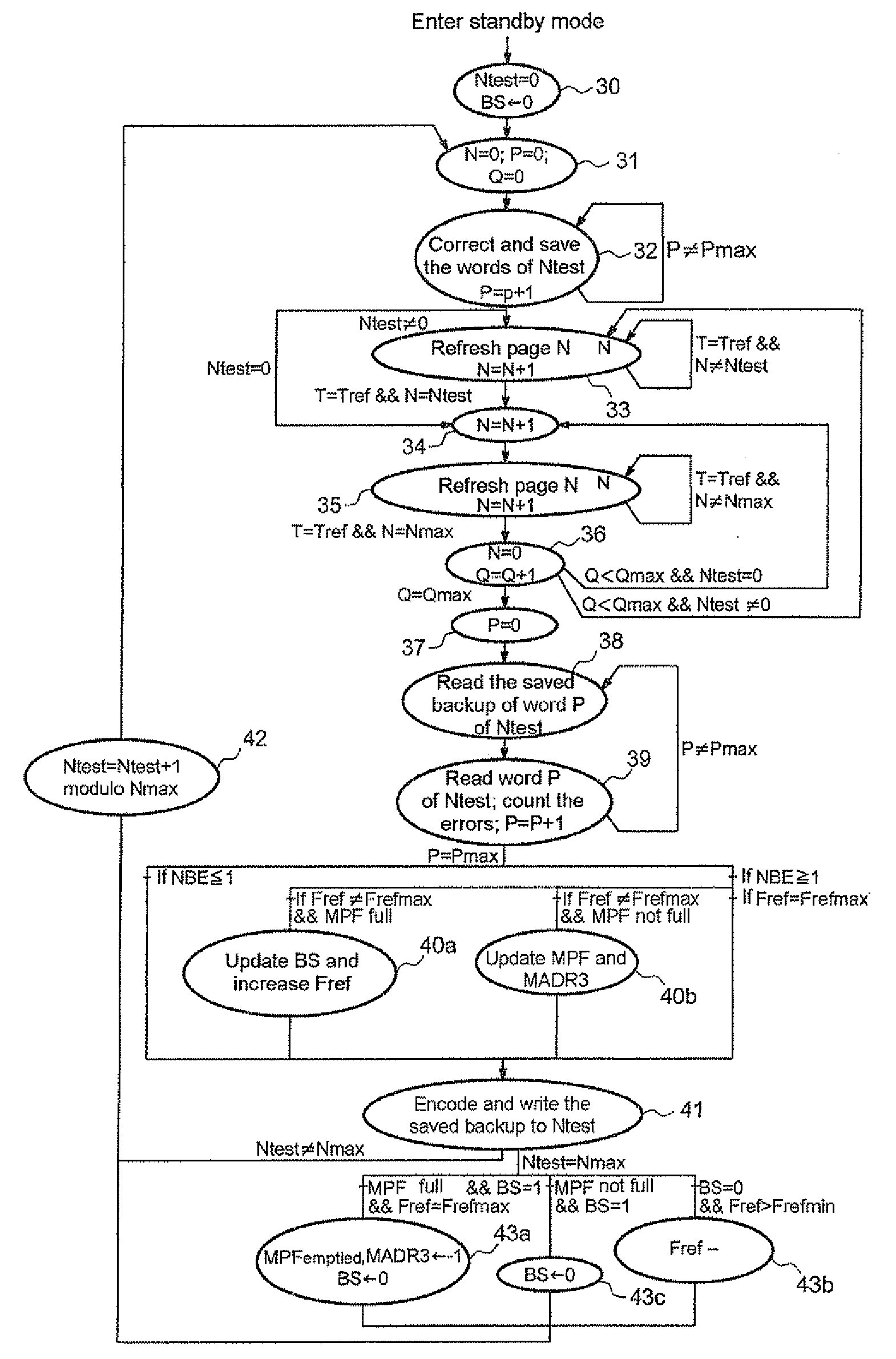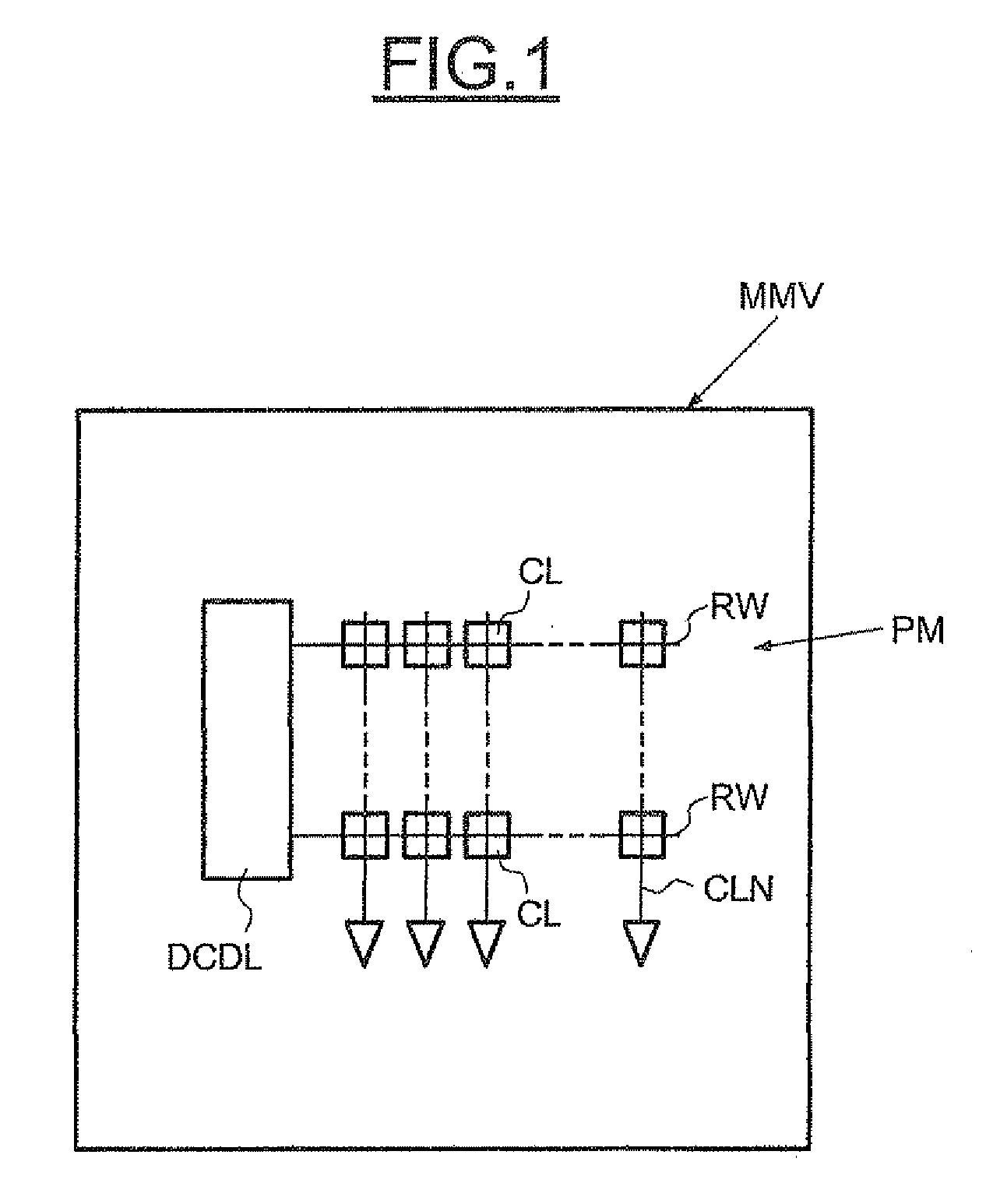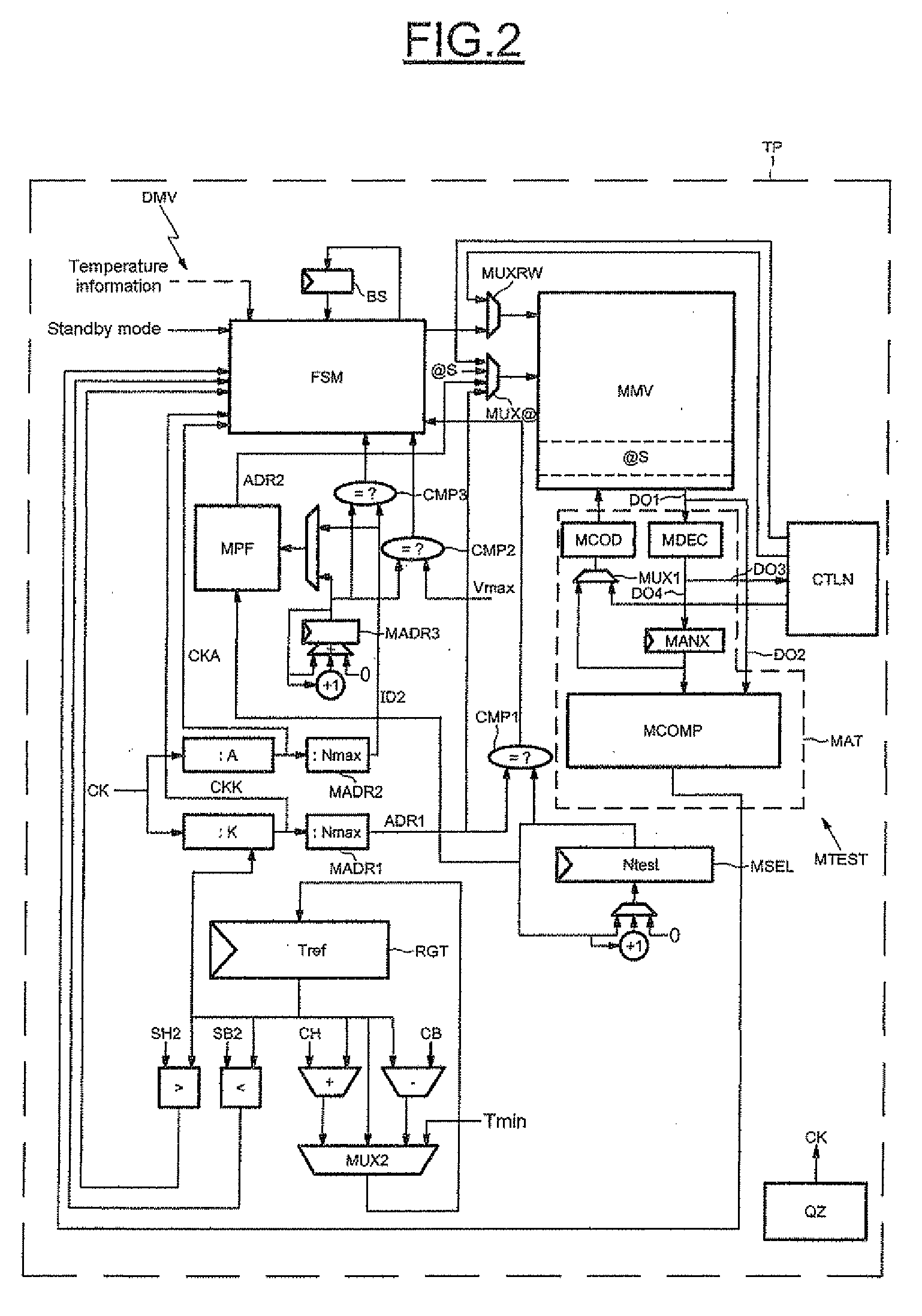Method of refreshing a dynamic random access memory and corresponding dynamic random access memory device, in particular incorporated into a cellular mobile telephone
- Summary
- Abstract
- Description
- Claims
- Application Information
AI Technical Summary
Benefits of technology
Problems solved by technology
Method used
Image
Examples
Embodiment Construction
[0041]In FIG. 1, the reference MMV designates a dynamic random access memory whose memory plane PM comprises a matrix array of memory cells CL typically organized in rows RW and columns CLN. Each memory cell generally comprises a transistor and a capacitor. Additionally, in a conventional manner known, the memory plane PM is connected to a row decoder DCDL and to a column decoder (which are not represented here for simplifying purposes).
[0042]In a general manner, the retention time of all the cells of the memory may be measured continuously and dynamically on the chip (integrated circuit) containing the memory MMV, and the refresh period of this memory may be adjusted accordingly. In the example described herein, the memory is organized into memory pages, a page corresponding to a line of words.
[0043]Also, before returning in greater detail to the algorithm for adjusting the refresh period, we may forthwith describe the basic outline of a mode of implementation thereof which compris...
PUM
 Login to View More
Login to View More Abstract
Description
Claims
Application Information
 Login to View More
Login to View More - R&D
- Intellectual Property
- Life Sciences
- Materials
- Tech Scout
- Unparalleled Data Quality
- Higher Quality Content
- 60% Fewer Hallucinations
Browse by: Latest US Patents, China's latest patents, Technical Efficacy Thesaurus, Application Domain, Technology Topic, Popular Technical Reports.
© 2025 PatSnap. All rights reserved.Legal|Privacy policy|Modern Slavery Act Transparency Statement|Sitemap|About US| Contact US: help@patsnap.com



